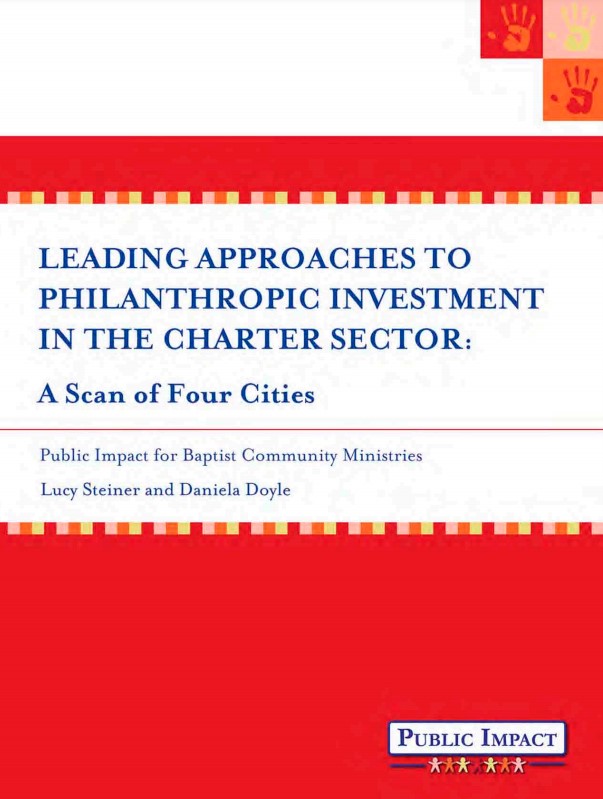Commissioned by Baptist Community Ministries (BCM) in 2010, this report examines how philanthropic organizations in four American cities—Albany, N.Y.; Denver, Colo.; Harlem, N.Y.; and Houston, Tex.—have affected the charter sector. This scan includes information about how a select number of philanthropic organizations in each city developed their investment strategies, made investment decisions, and evaluated the impact their investments are having on public education.
Develop investment strategy
- Foundation officers all described funding priorities both in terms of the outcomes they hoped to achieve and their “theory of change”—the pathway through which they believe they can best reach those outcomes.
- Several foundation officers reported that they focus on a narrow set of barriers that present the greatest challenge in a given situation. These are the obstacles that cause a “bottleneck” in the entire reform process.
Make investment decisions
- The most common charter investments were: 1) direct grants to support the development and scale-up of highly successful charter schools; 2) facilities support; 3) human capital development; 4) advocacy; and 5) charter support organizations and charter school associations.
- At least one interviewee in every city named access to facilities as one of the biggest barriers to a vibrant charter sector. Nonetheless, few philanthropies seemed willing to provide funding to build, renovate, or rent space.
- Many grantees commented that philanthropies ought to increase support for advocacy efforts that address inequities in charter funding and support.
Measure impact
- Common outcome measures include: test scores, academic growth, graduation rates, college matriculation, college persistence, lifetime earnings, and positively influencing the field.
- To assess progress toward these outcome goals, foundations often develop robust interim measures that may include academic, operational, and community-based metrics.

